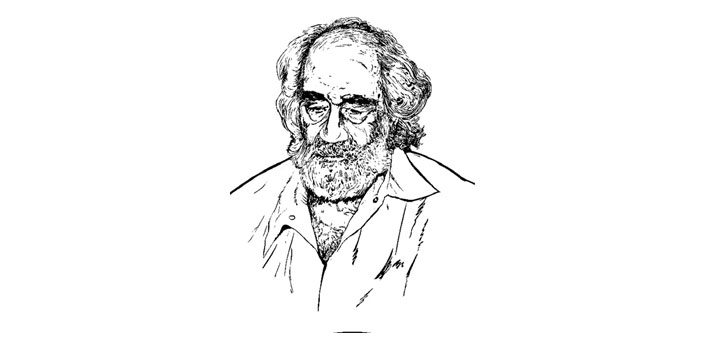A revolutionary artist (1933-2014)
Bold colours and thick lines are hallmark of artist Prokash Karmarkar, who fought with penury and sufferings but never gave up his art or compromised it by taking up commercial assignments. He is one of the outstanding painters of contemporary India known for his originality. His work is culmination of rich inheritance of Indian art and dynamic spirit of the modern age. Born in Calcutta (now Kolkata) in 1933, he has lived through wars, famine, communal riots, and partition, and his powerful brush has caught the anguished search of his age for meaning and direction in bold lines and rich colour. His magnificent distortions offer a profound insight into the hidden matrix of experience.
Prokash was born in 1934, to an artistic family, his father was a renowned artist of his time, but lost everything including his paintings in communal riots in 1940s. His father Prohlad Karmarkar, a pioneer of modern painting in India, died early leaving Prokash to fend for himself. Prokash faced poverty since childhood, but got himself enrolled in the Government College of Art, Kolkata, to peruse his passion. He saw many ups and downs in his life and career once his parents died in early 1949. For a brief period he joined army, but a wandering soul soon returned back to canvas and continued his difficult journey into art.
Out of necessity he was pushed to sell his works on street, and he took to street so much that he exhibited and sold his works on streets like no other Indian artist had done. Due to this unique way of displaying his works on streets and his left leanings, he was considered as a revolutionary artist. He used to say, “I do not want my paintings to be imprisoned within four walls.” Seeing many struggling artists in and around Kolkata, he formed a society of artists but in the absence of any support, the venture fizzled out while the Society of Contemporary Artists which almost ran parallel thrived.
Being treated as an outsider, his early works depicted degeneration of moral values in the society; his works always glorified sacrifices of poor and did not hide his applause for the Naxalite movement gaining strength in those days. He was proficient in oil and acrylic painting and had his own brand of thick lines to outline human figures and patches of bold colours to show variations in backgrounds. His landscapes are unique in many ways capturing the true essence of India, but at the same time very modern in approach and treatment. His figures, his lines, his distortions are scintillating. His later day paintings moved away from traumatic and harsh subjects to simple peaceful life in rural Bengal. He experimented and depicted village people in the form of mythological figures like Radha-Krishna. He was influenced by the works of Picasso and other classic impressionists from Europe. As a result, his works reflect degeneration of moral values and confusion that prevailed in the society.
He was recognised as an artist in 1957 when he received an award for his water colour work at the national art exhibition held in New Delhi. However he was never patronised by the art world and continued to display his works in street shows. As his experiment of forming artists’ group fizzled out, he was lucky to get French fellowship to study art in Paris.
His stay in Paris and study of the classical works by master painters and interaction with contemporary European artists helped him to hone his skills and develop his own style by fusion of Oriental and Western art, leaving behind authentic stamp of his individuality. Over the years his paintings have been acquired for their collection by the Modern Art Gallery, New Delhi, Birla Academy of Art and Culture, Calcutta, Rabindra Bharati University, Calcutta, Allahabad Museum, Lalit Kala Akademi, Lucknow, Art Heritage of India, New Delhi, to name a few. He left his indelible mark on Indian art scene and became an icon for many more generations of artists who followed his way of visual language.

